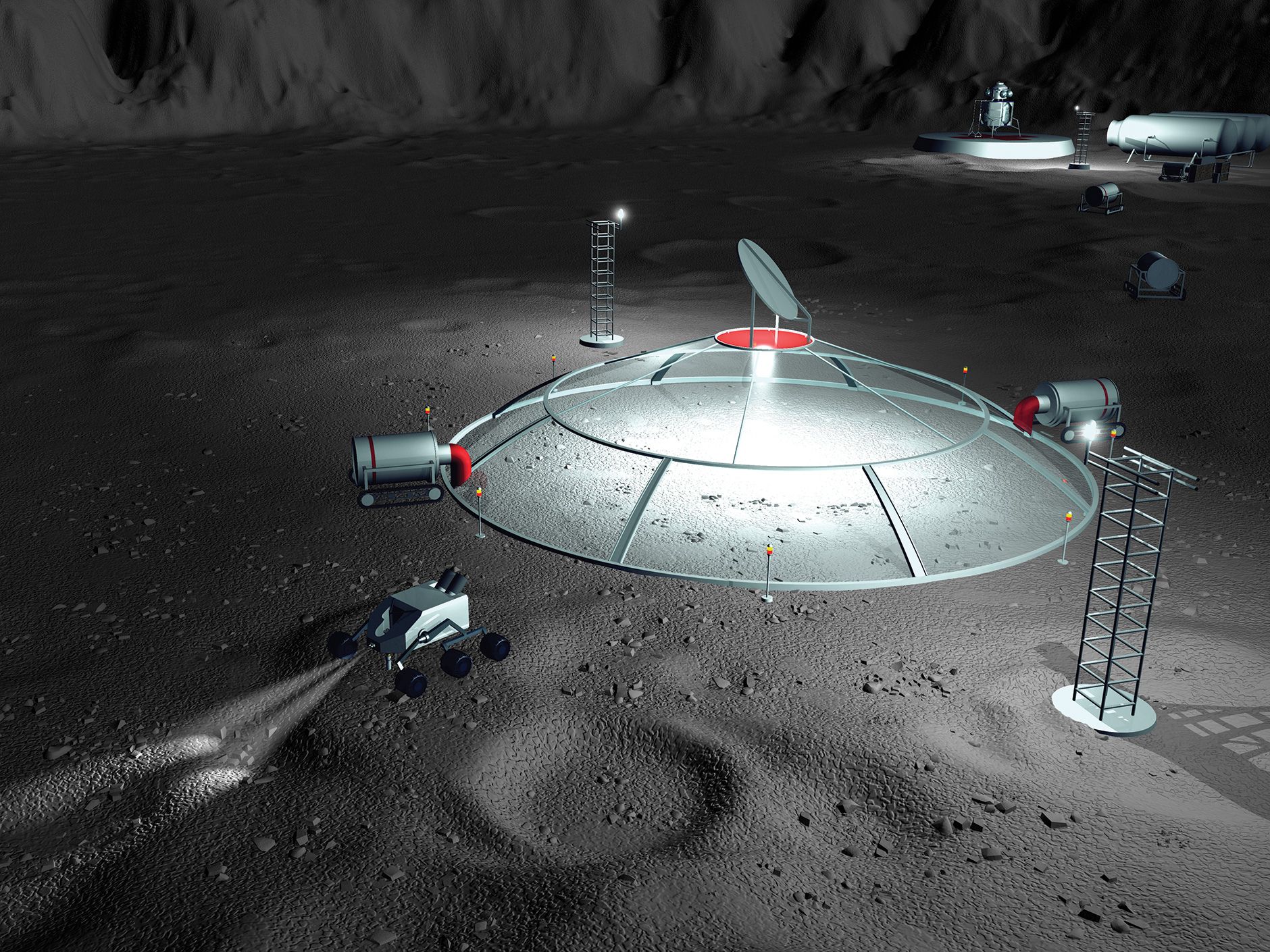Squeezing Rocket Fuel From Moon Rocks
Here’s how lunar explorers will mine the regolith to make rocket fuel
The most valuable natural resource on the moon may be water. In addition to sustaining lunar colonists, it could also be broken down into its constituent elements—hydrogen and oxygen—and used to make rocket propellant.
Although the ancients called the dark areas on the moon maria (Latin for “seas”), it has long been clear that liquid water can’t exist on the lunar surface, where it would swiftly evaporate. Since the 1960s, though, scientists have hypothesized that the moon indeed harbors water, in the form of ice. Because the moon has a very small axial tilt—just 1.5 degrees—the floors of many polar craters remain in perpetual darkness. Water could thus condense and survive in such polar “cold traps,” where it might one day be mined.
Water Water Everywhere: Finding rich deposits of ice and extracting it should be possible but will be technically challenging for lunar settlers.
▲
Mapping the Moon: Several lunar missions have produced strong evidence of water ice. A NASA instrument called the Moon Mineralogy Mapper (M3) found indications of water ice on the permanently shadowed floors of some polar craters. However, the measurements suggest that only a small fraction of cold traps contain ice [colored areas], and that the ice is probably mixed with lunar regolith. Data source.
▲
Rover-Mounted Drill: The most straightforward strategy for extracting water from polar ice deposits uses a rover-mounted drill. Honeybee Robotics has designed a Planetary Volatiles Extractor with a heated auger, which would cause any water ice in the drilled regolith to vaporize. That vapor would then move through a tube to a condenser unit, where it would turn back into ice.
▲
Thermal Mining: A more ambitious scheme for extracting water from the moon is “thermal mining.” Researchers at the Colorado School of Mines have proposed redirecting the sun’s rays , using heliostats mounted on a crater rim. Water trapped in the regolith would turn into vapor that would be collected in a large tent, then vented into refrigerated cold traps, where it would condense as pure water ice.
▲
Compressed-Gas Transport: To produce rocket fuel from water ice would require an electrolyzer to break the water into hydrogen and oxygen, which would then be compressed and stored for later use. In situ production would also require vehicles to transport the processed fuel to rocket pads.
▲
David Schneider is a former editor at IEEE Spectrum, and continues to contribute Hands On articles. He holds a bachelor's degree in geology from Yale, a master's in engineering from UC Berkeley, and a doctorate in geology from Columbia.
